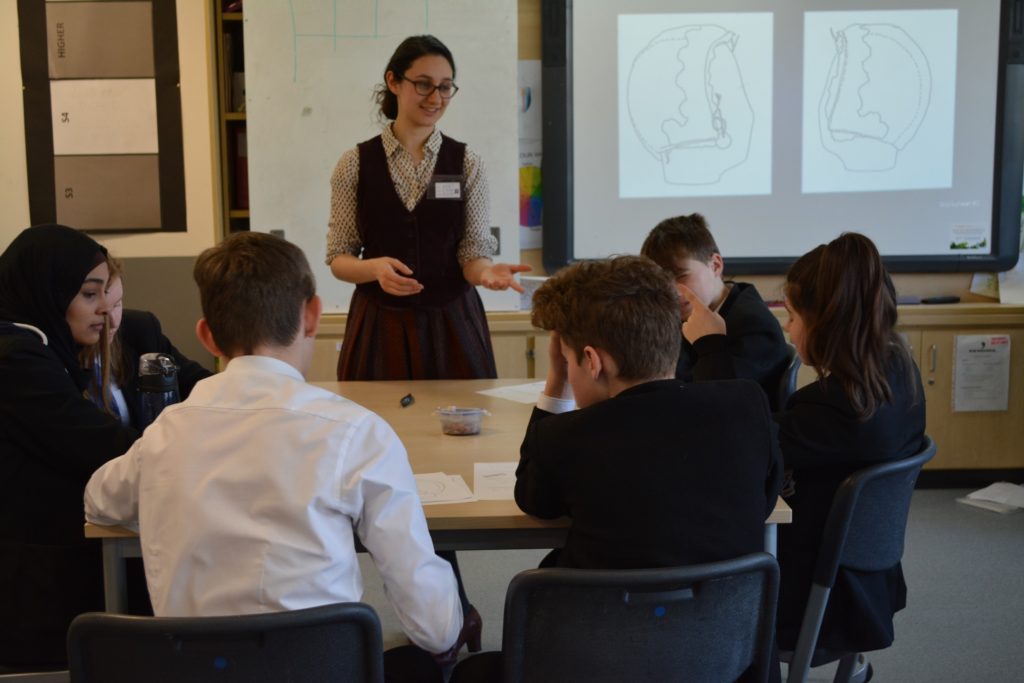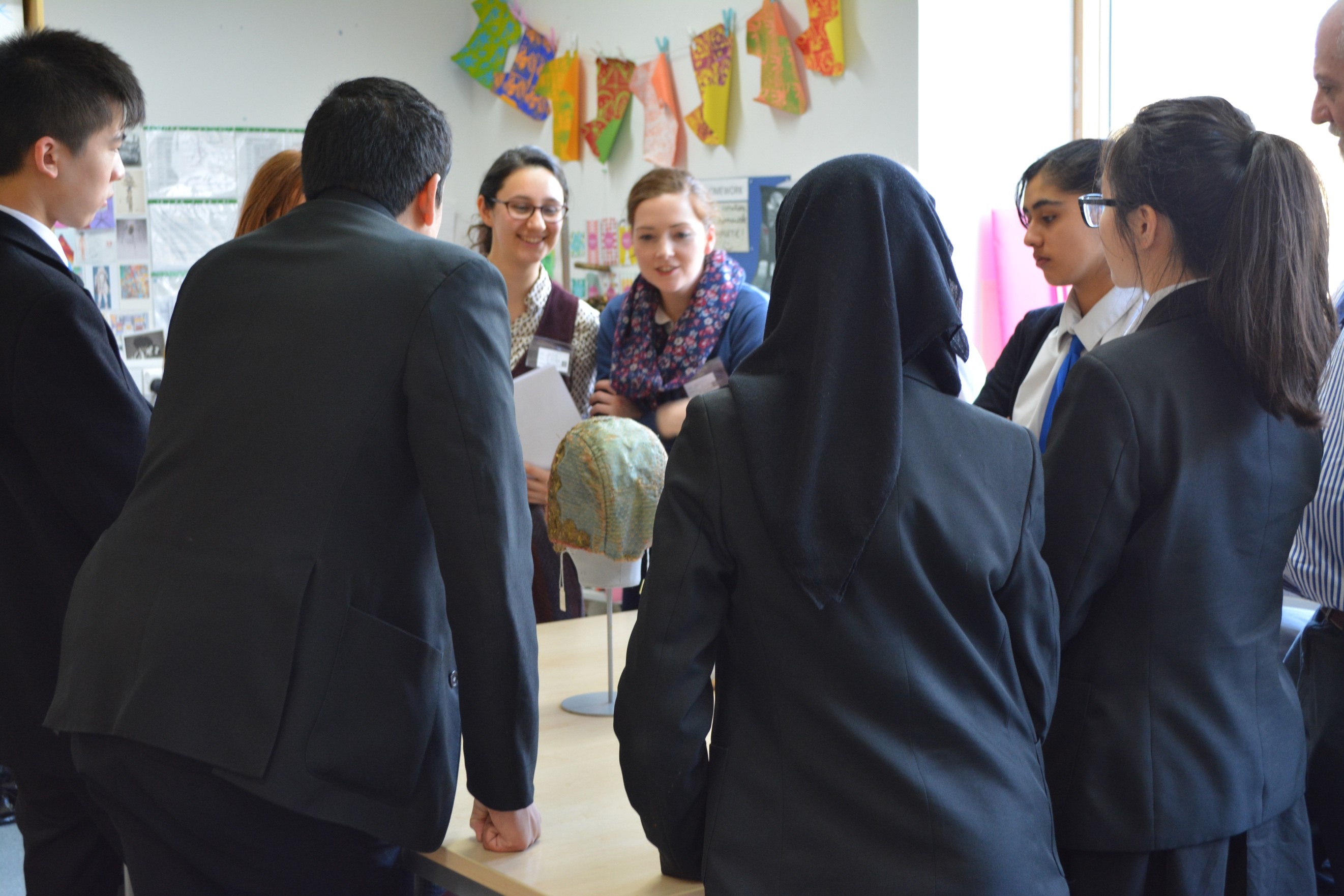
by Lorna Rowley, 2nd year student, MPhil Textile Conservation.
The MPhil Textile Conservation programme provides students not only with the practical skills necessary to carry out interventive conservation treatments but also with the professional attributes necessary to meet the needs of the heritage sector. One growing part of this professional skill is public engagement. Throughout our training, we are invited to present our work to a range of audiences; these include discussion of the progress of our treatments with fellow students, professional colleagues and visitors. As part of our Professional Development course in the 2nd year we are encouraged to develop our public engagement skills by giving presentations to different community groups.
The Centre for Textile Conservation and Technical Art History (CTCTAH), University of Glasgow has a long standing partnership with Eastwood High School, Newton Mearns. This year presentations were delivered to two classes of 3rd year pupils studying Art & Design. Our job was to reinforce the school’s focus on interdisciplinary learning and engage the students for a full fifty-minute class. Drawing on the range of skills developed so far on the textile conservation programme, my classmate Keira Miller and I packed our bags and went back to school!
Our goal was to provide an overview of the range of interdisciplinary skills required in textile conservation practice in a way that was both relatable and interactive. To begin we gave a brief overview of our academic backgrounds and explained how we arrived at a career in textile conservation.

Through a series of activities drawing on examples from Glasgow’s rich heritage, we first asked students to consider what they thought should be in a Glasgow museum 100 years from now. Their suggestions for items to be included were both amusing and insightful, including a well-known local tonic wine as well as medals and memorabilia from the vibrant XX Commonwealth Games which took place in the city in 2014.
Then, using the Canadian Conservation Institute’s, ten agents of deterioration, we introduced the students to the scientific aspects of textile deterioration that form the basis of all conservation treatments as well as preventive conservation techniques. We brought along a nineteenth century cap from the Karen Finch reference collection in order to allow the students to gain first-hand experience of a historic artefact and relate the practical skills necessary for interventive treatment. Split into two groups, the tasks set out included documenting areas of damage and colour matching.
The aim of the presentation was to convey the message that textile conservation offers a fascinating combination of analytical problem-solving and hands-on work. I won’t lie; this was a daunting task from the outset. However, the students’ interested and engaging response was very encouraging and gratifying.

This assignment was a great opportunity to develop the necessary communication skills and to gain experience in giving presentations. Moreover, it was a welcomed confidence boost when preparing for our next public speaking challenge: the History of Art Postgraduate Symposium hosted by University of Glasgow, School of Culture and Creative Arts. Held over the course of three days (2nd – 4th of May), the symposium was an opportunity to share our individual dissertation research topics with an audience of our academic peers and tutors. The aim was to extend and develop our knowledge, sharpen our ideas and finally to introduce and position textile conservation practices in the wider cultural sector. For many of us, this was our first experience presenting at an academic symposium or conference. There were plenty of nerves and anxious anticipation of the question and answer section, but on the day each student seemed to take it in their stride. There is a fine balance between making textile conservation practices accessible and presenting them in a way that is oversimplified and in this respect, it was helpful for me to see how other students across all history of art disciplines approached and presented their topics.
The symposium was also an opportunity for us to leave the workroom and to learn about the broad range of research interests across the diverse History of Art postgraduate community. While listening to the various presentations, it occurred to me that despite the demands of the individual courses, there was an important and obvious overlap regarding the value of objects and shared knowledge. Interestingly, I noticed that many of the topics presented were inspired by and involved the history of Glasgow. For example, MLitt Dress and Textile Histories student Josephine Dear is currently undertaking her dissertation research on the social, cultural and economic legacy of the dress and textile collection of the 1878 Glasgow – Japan Exchange. Coincidently, I am currently undertaking the conservation treatment of an object from that exchange (watch this space, another blog coming soon).
Final thought:
Both the Eastwood High School and the Post-graduate Symposium presentations gave us the opportunity to share the abundance of knowledge gained throughout our two years of study, focus our research questions and develop our presentation skills. It is hoped that disseminating information in this way will inspire future generations to study textile conservation and encourage closer links between textile conservators and other disciplines, museum professionals and researchers.



